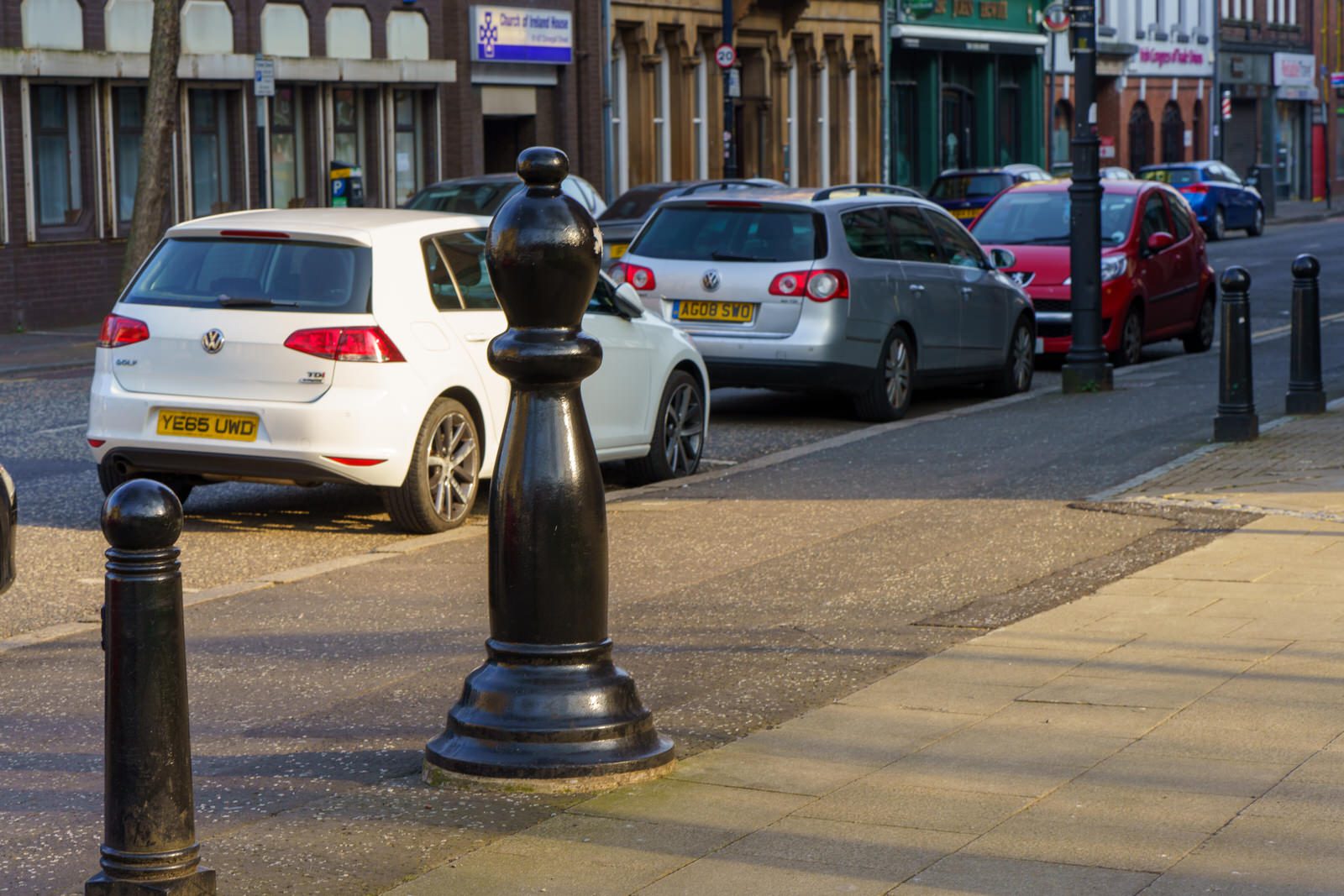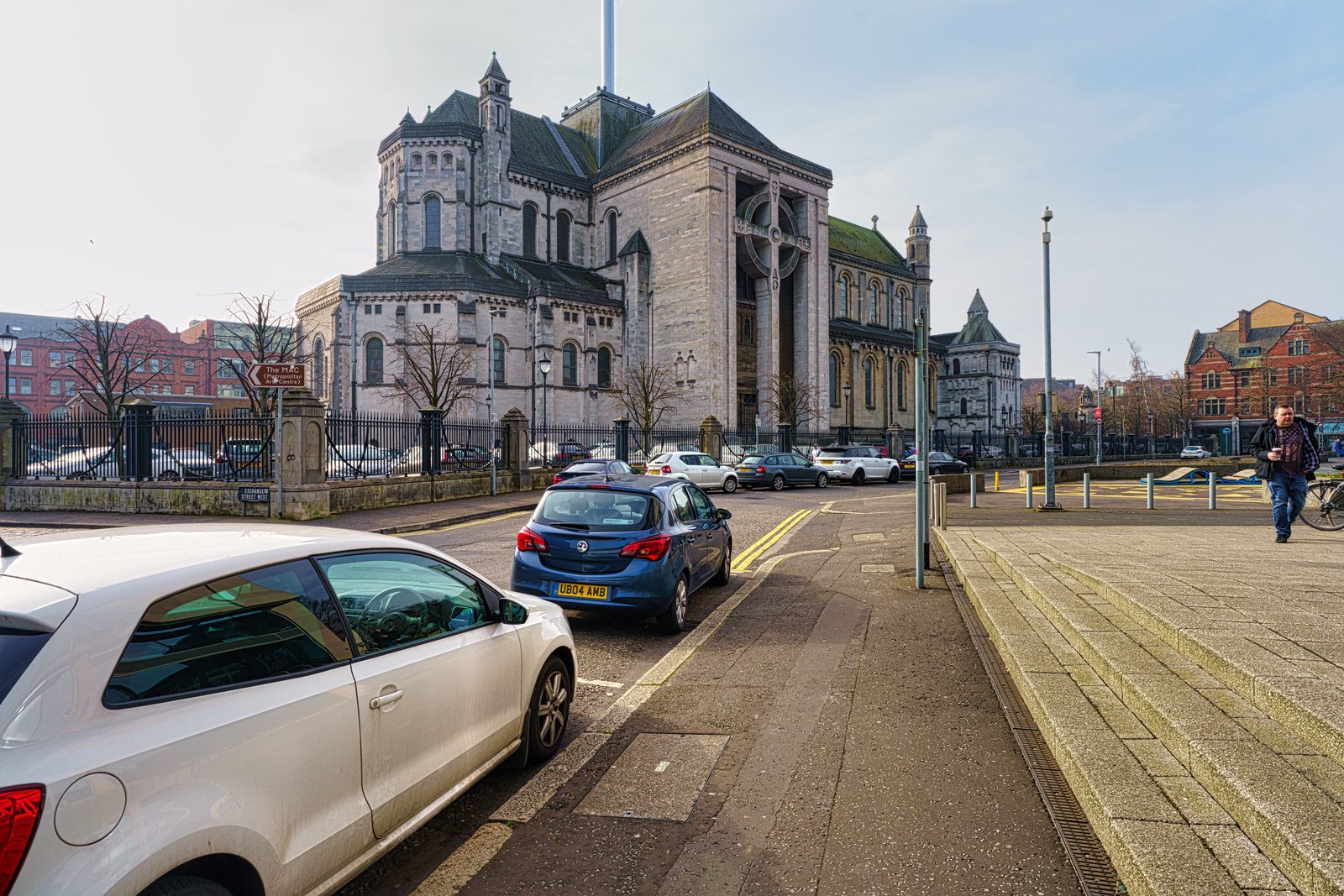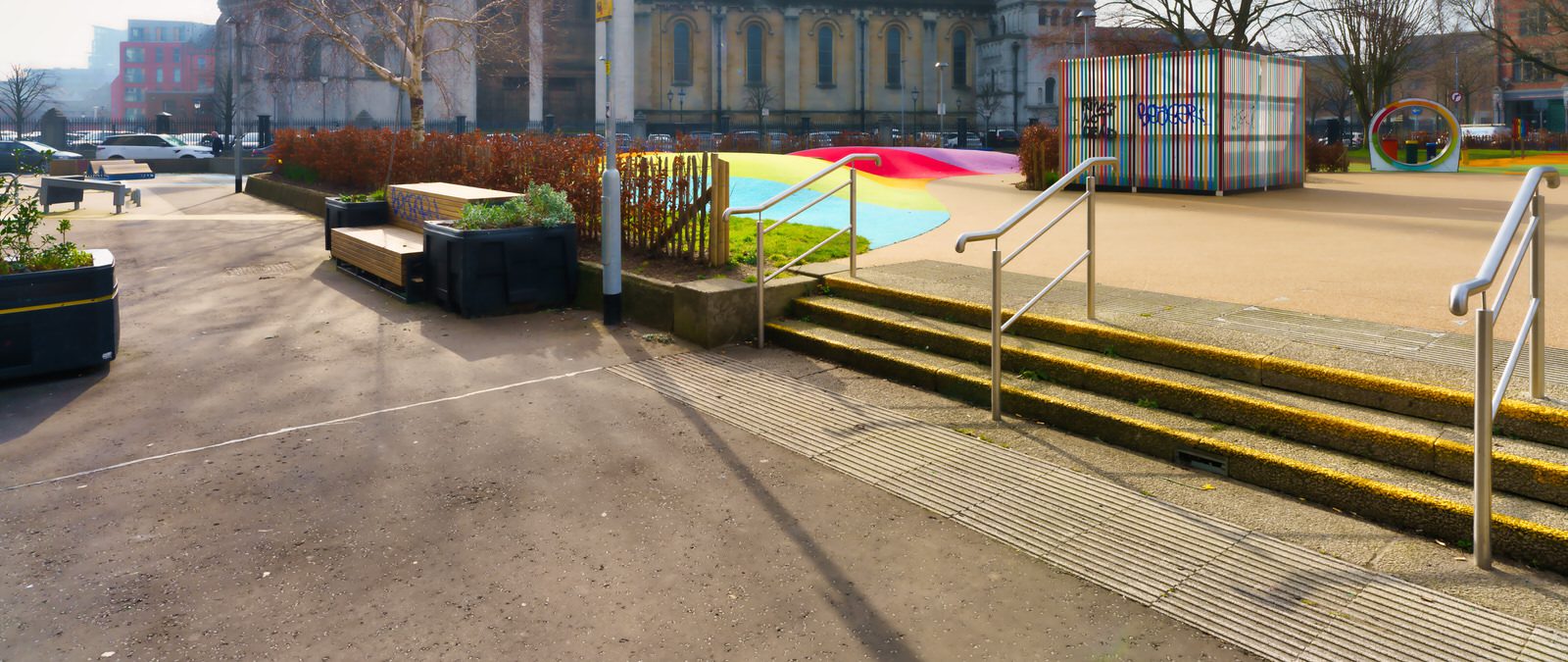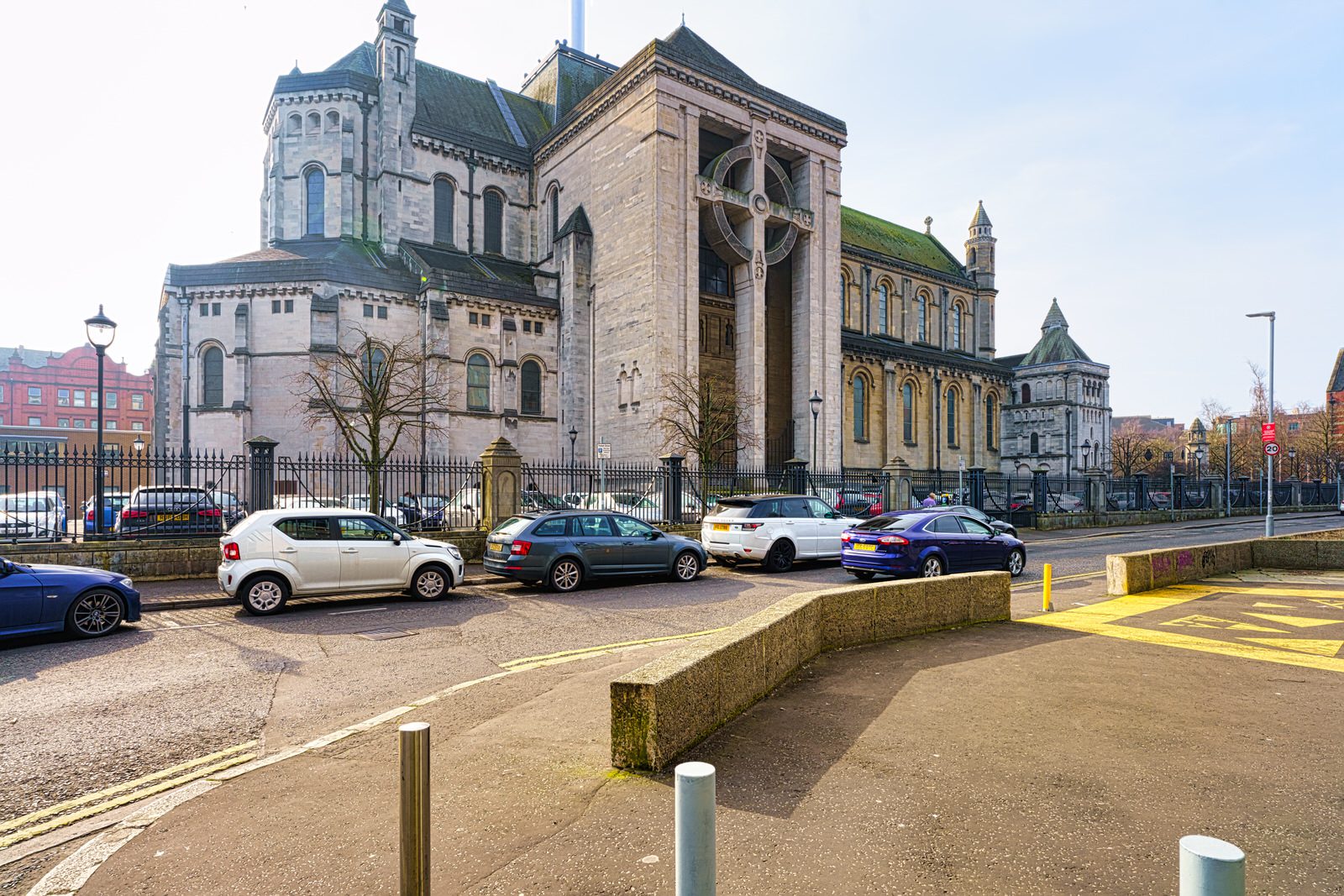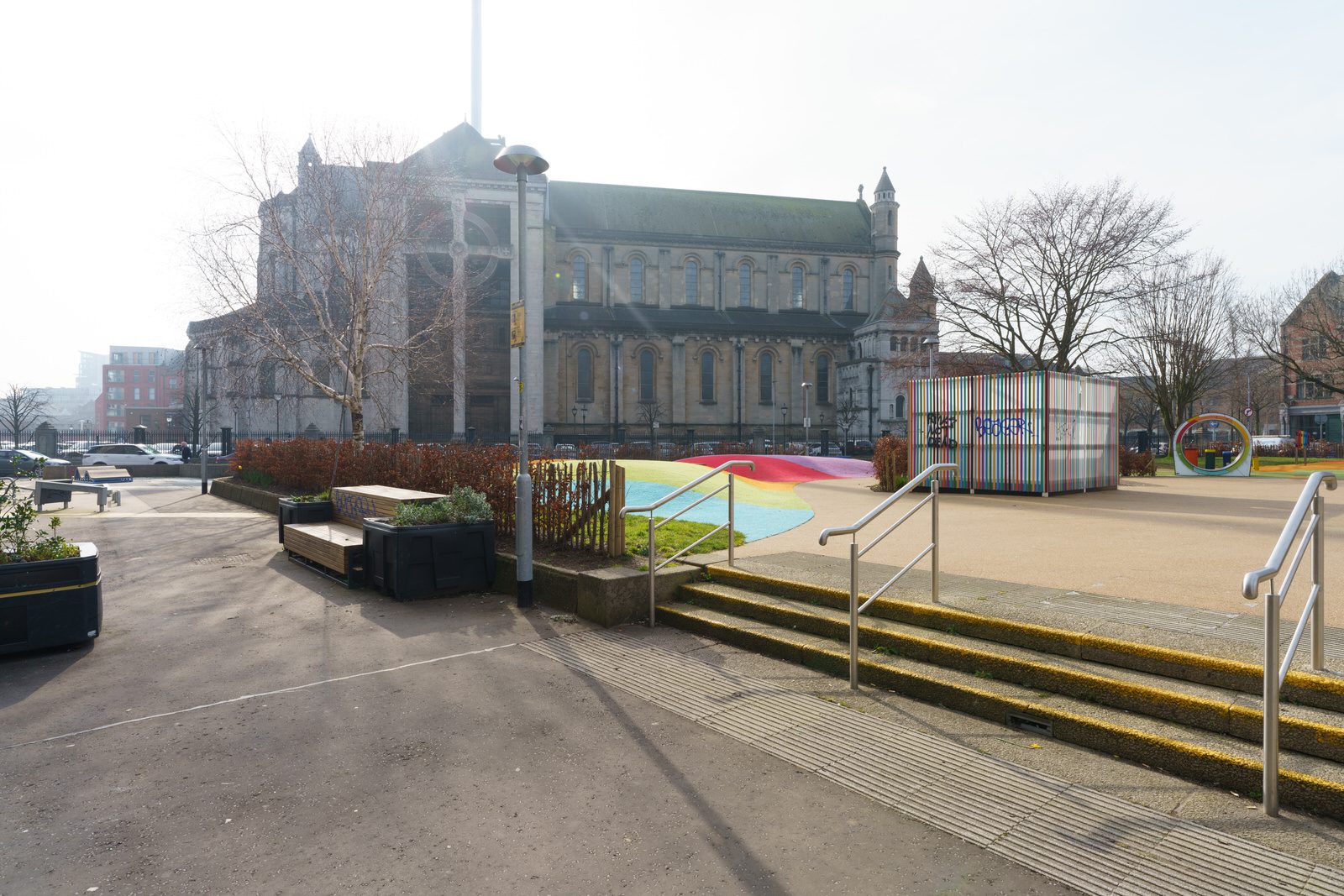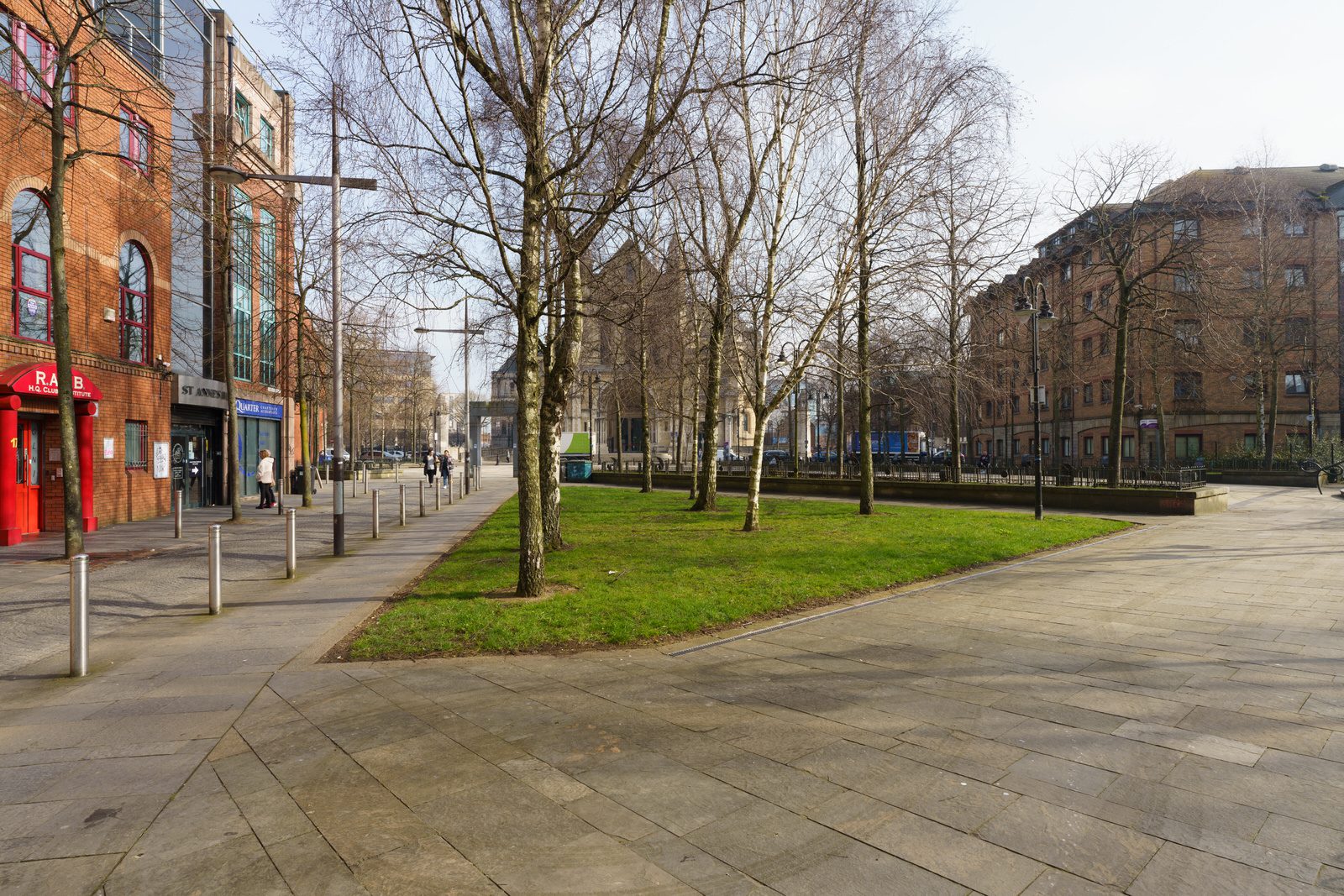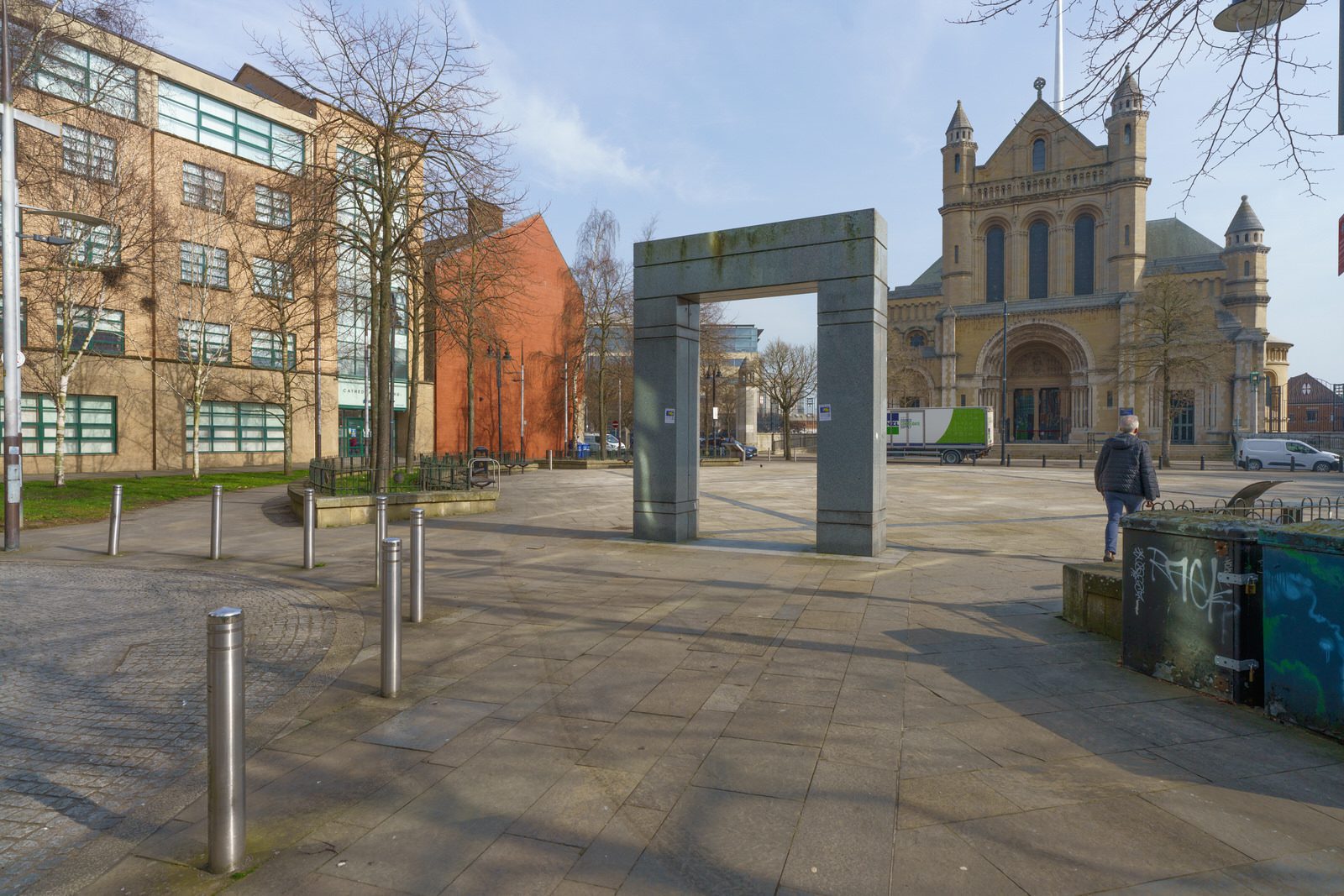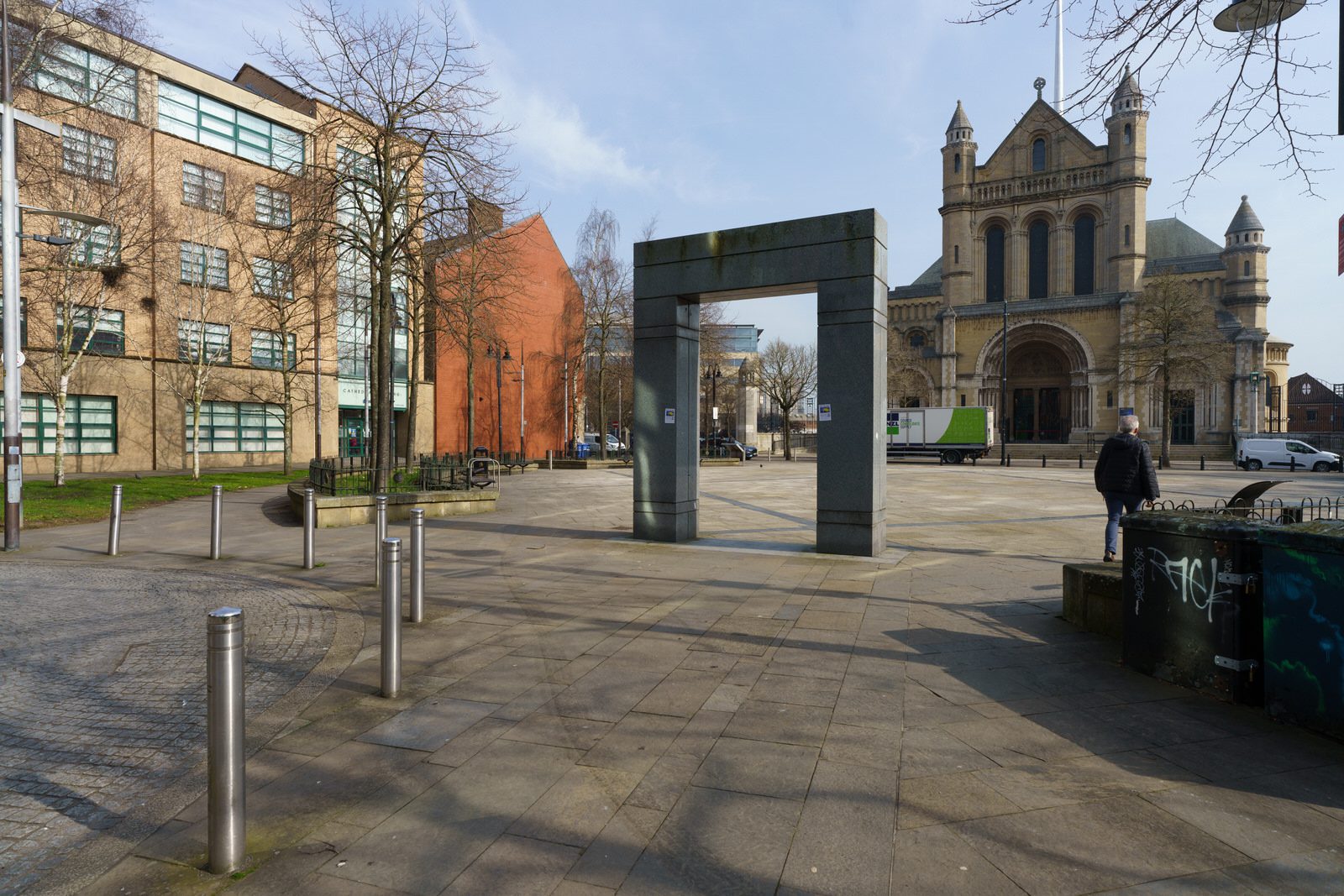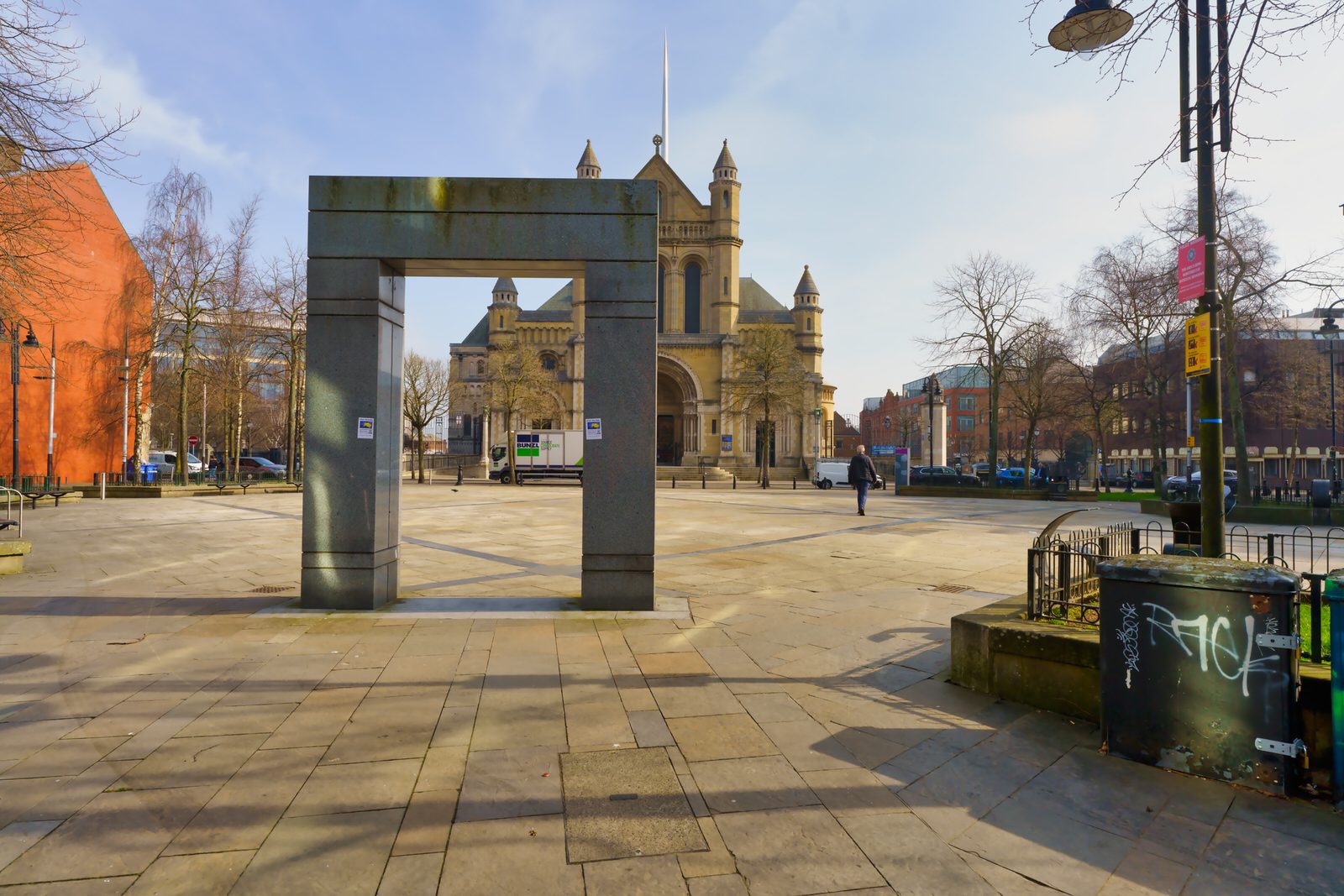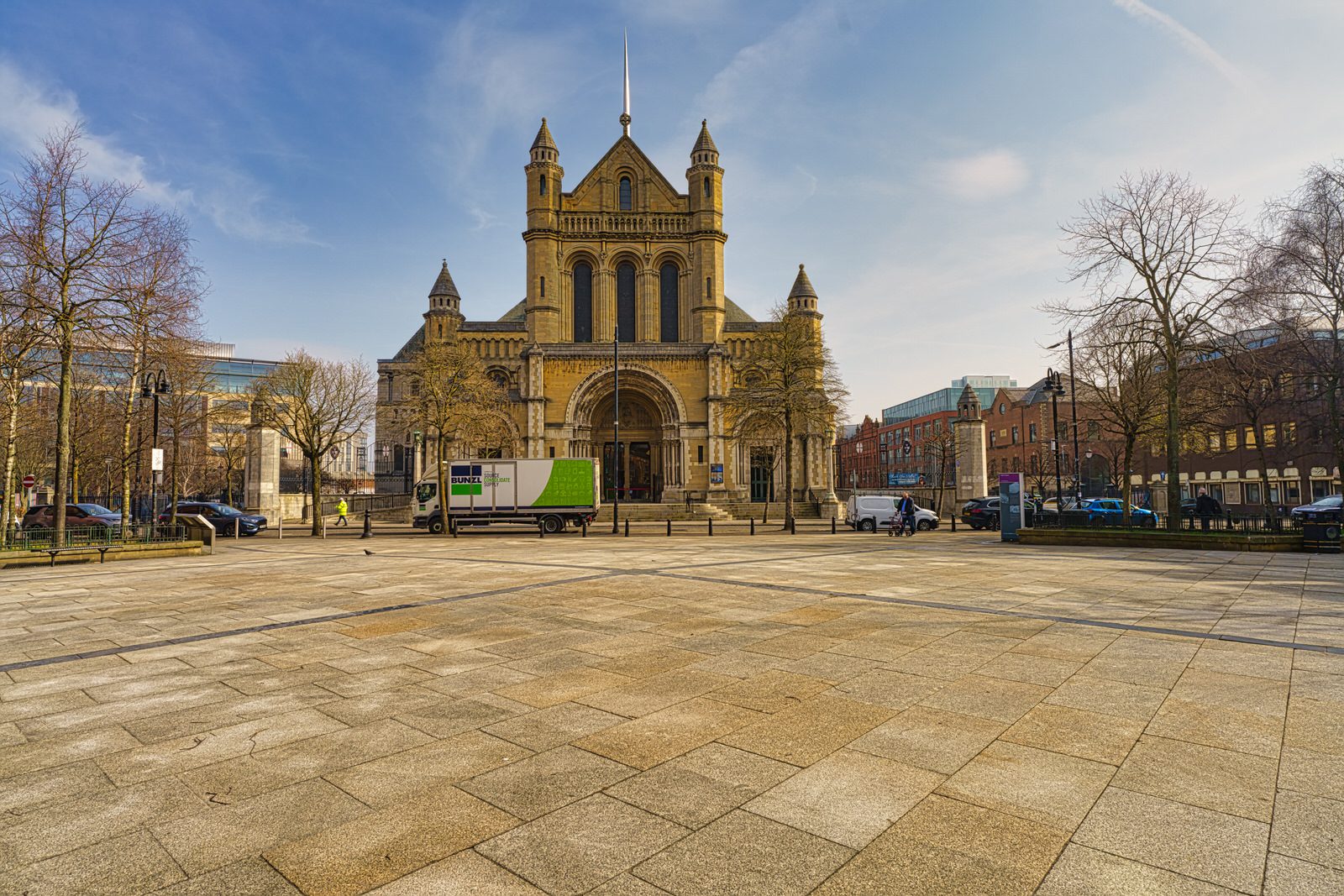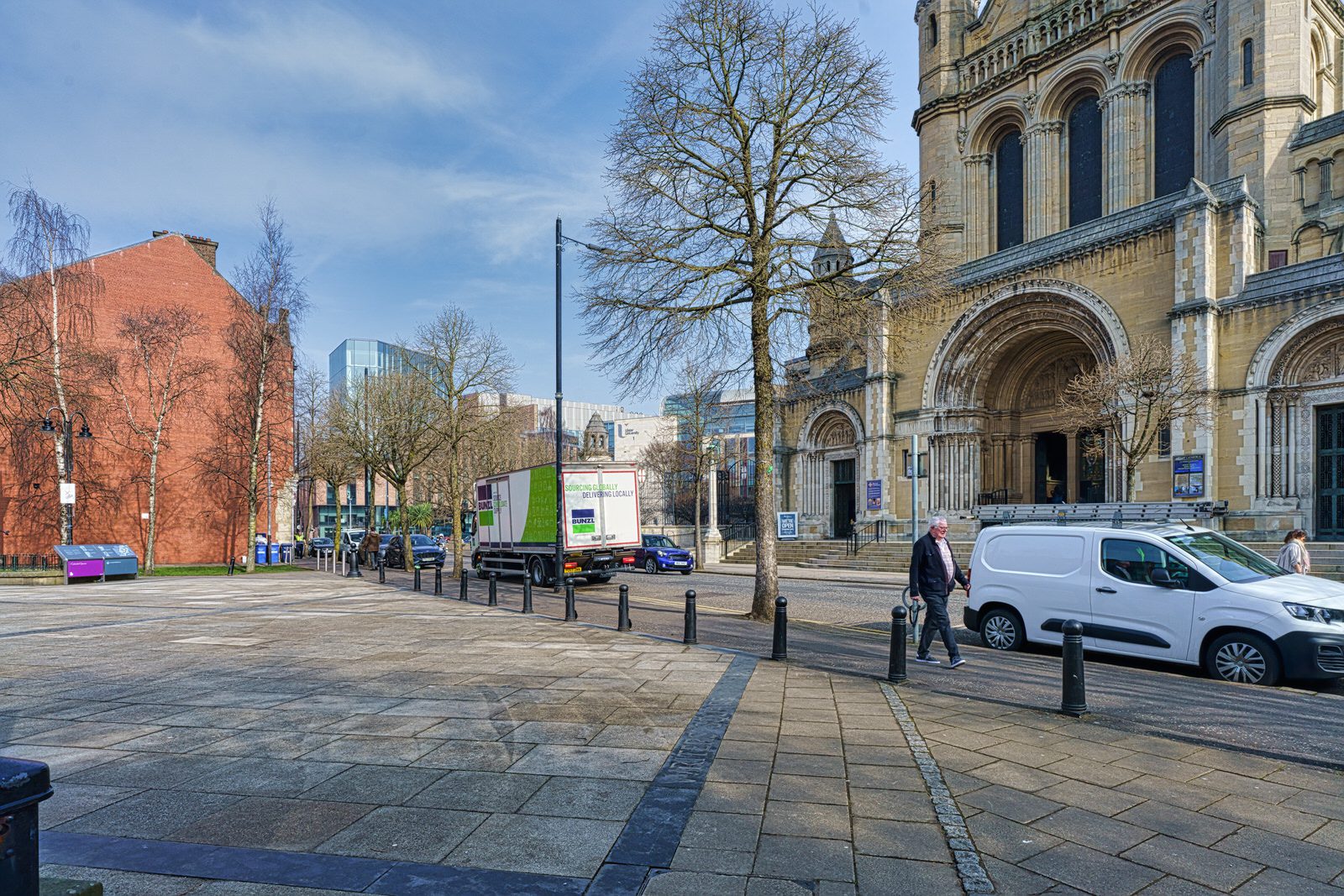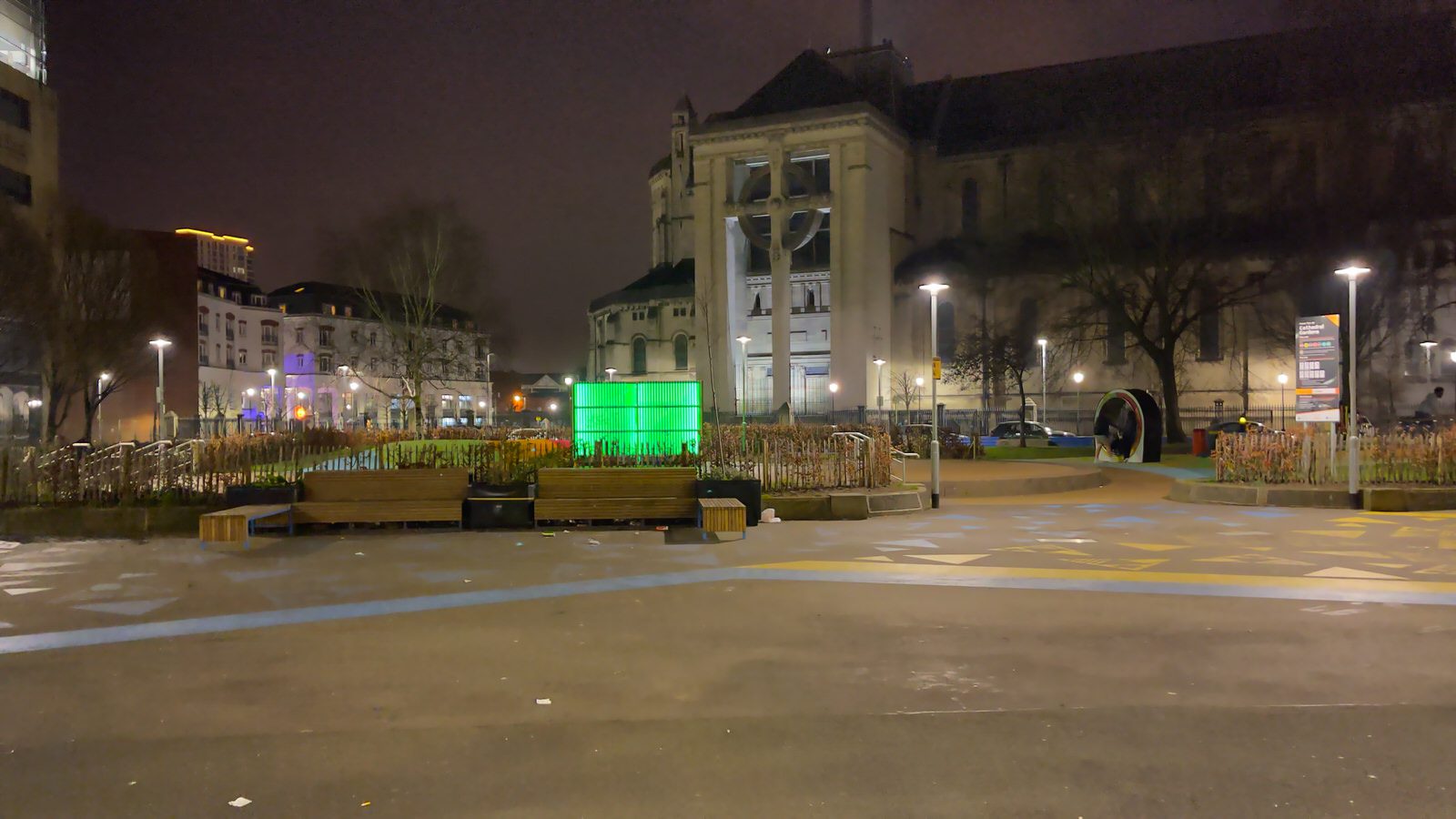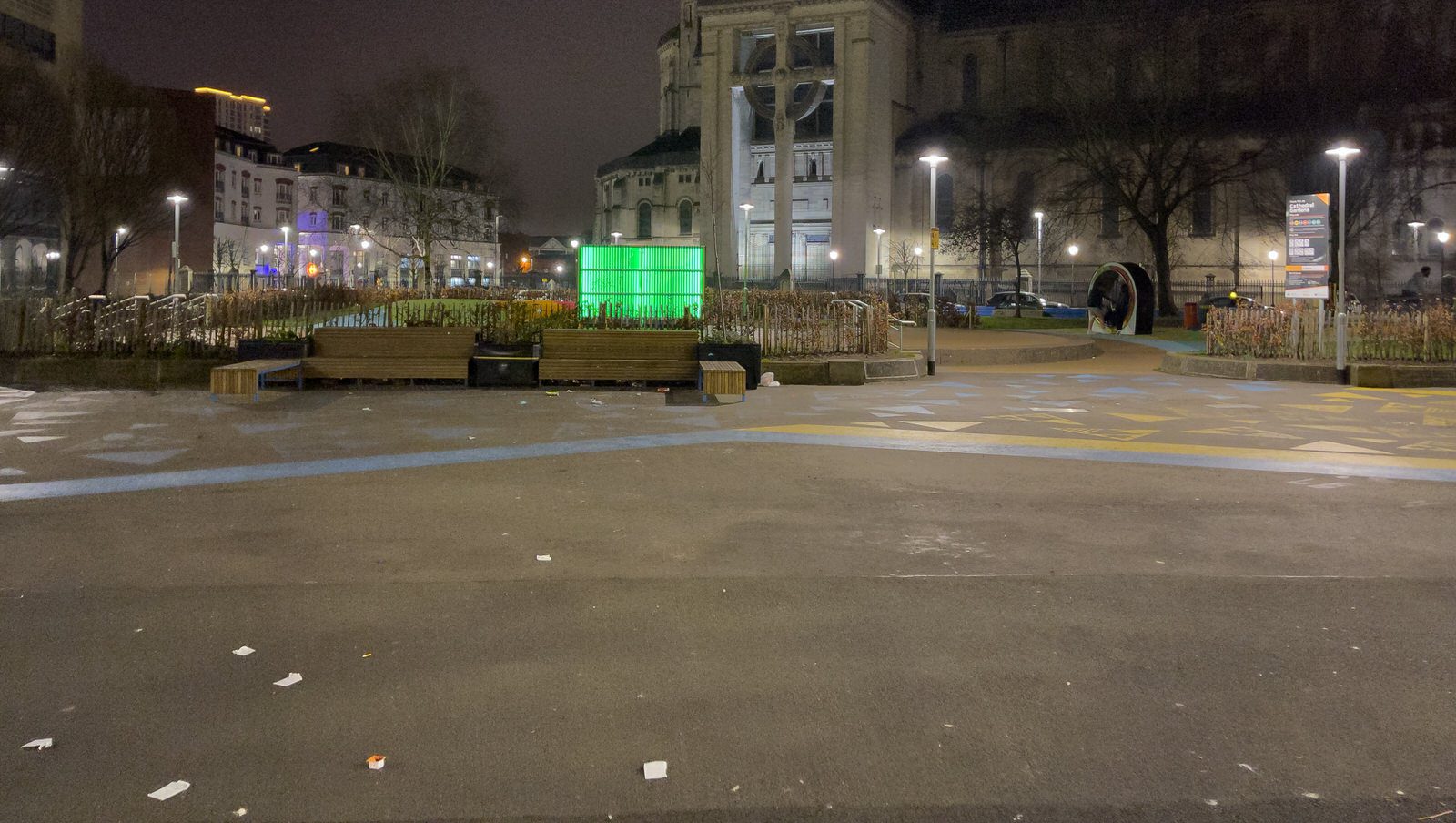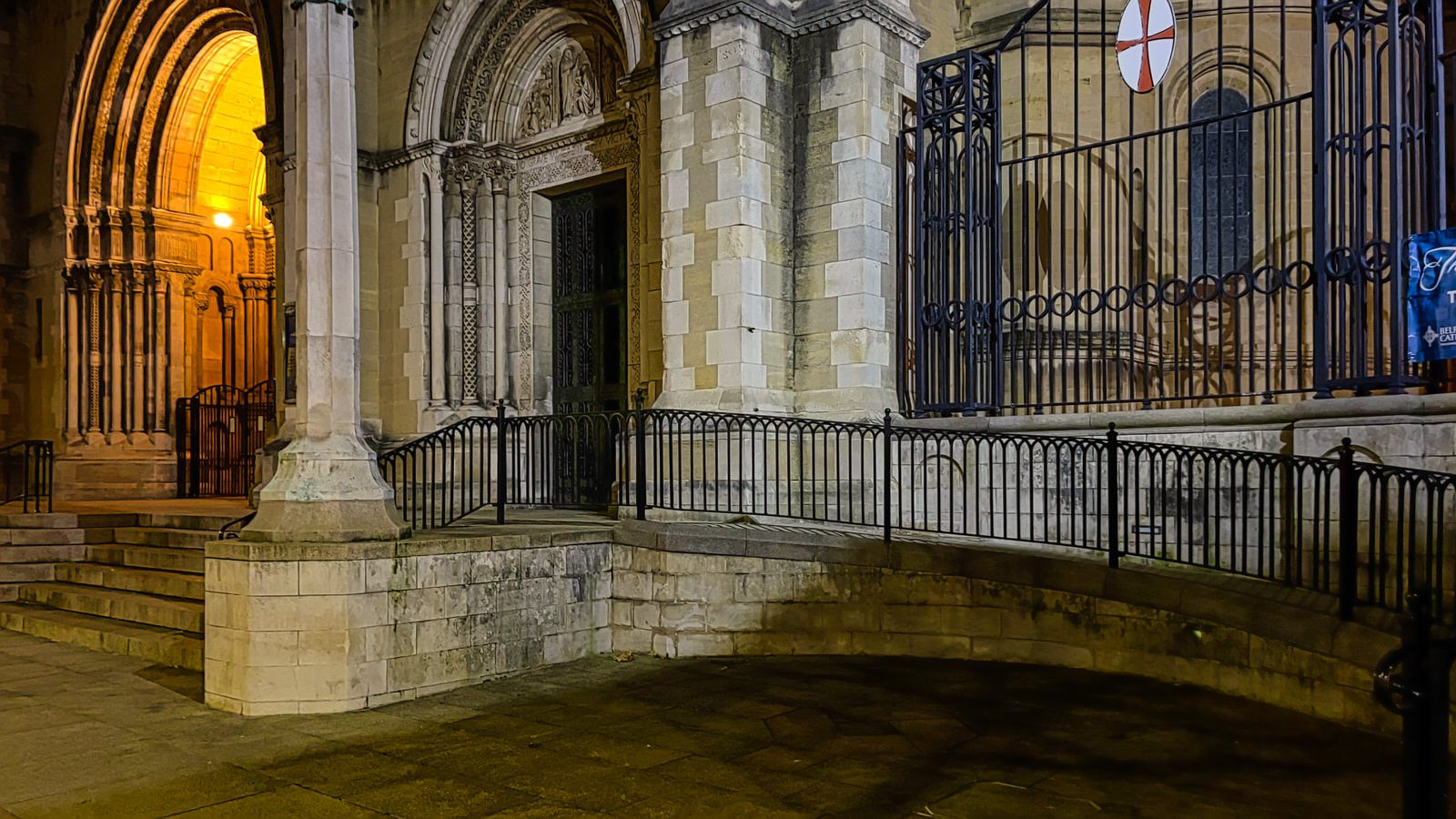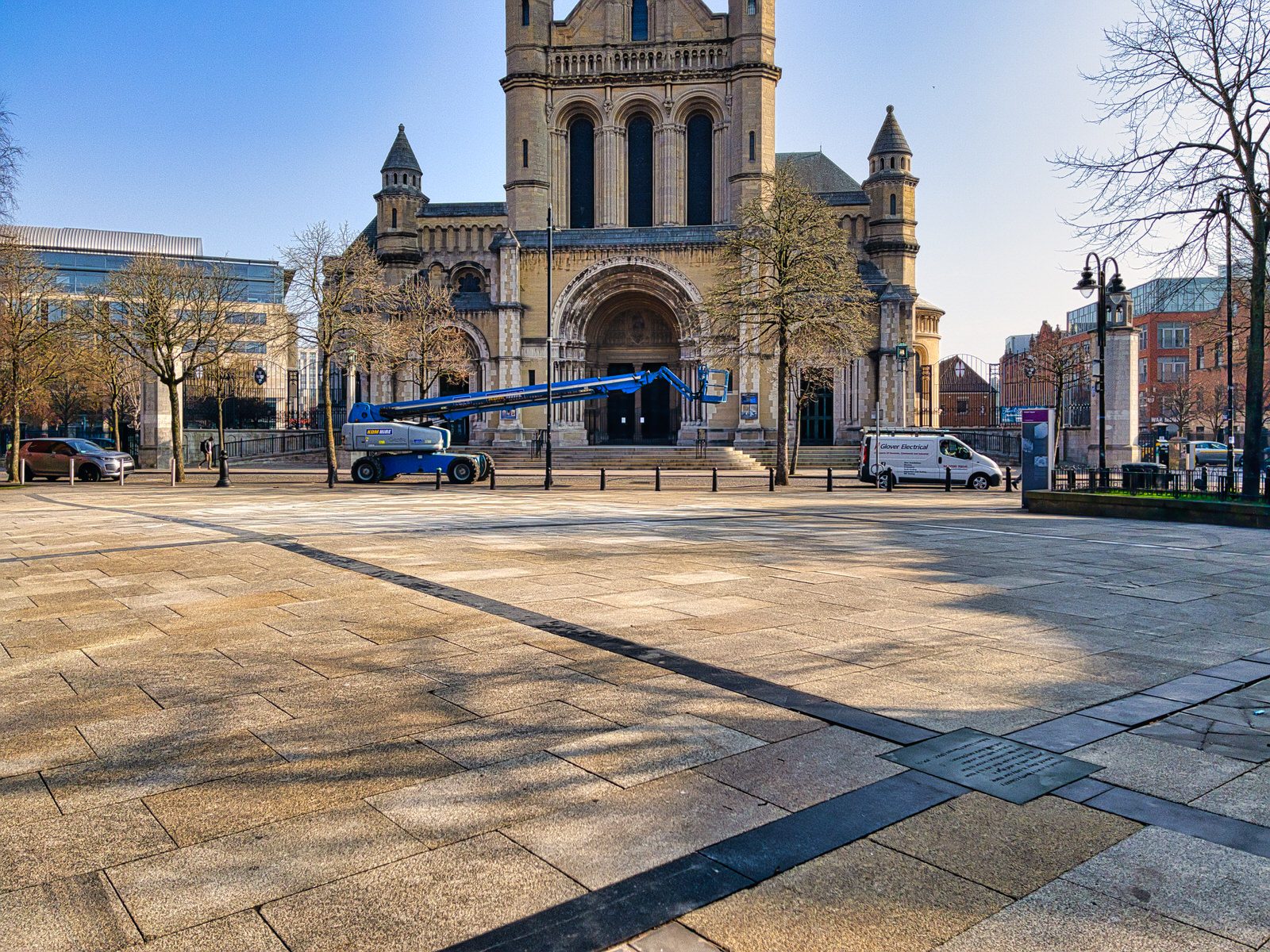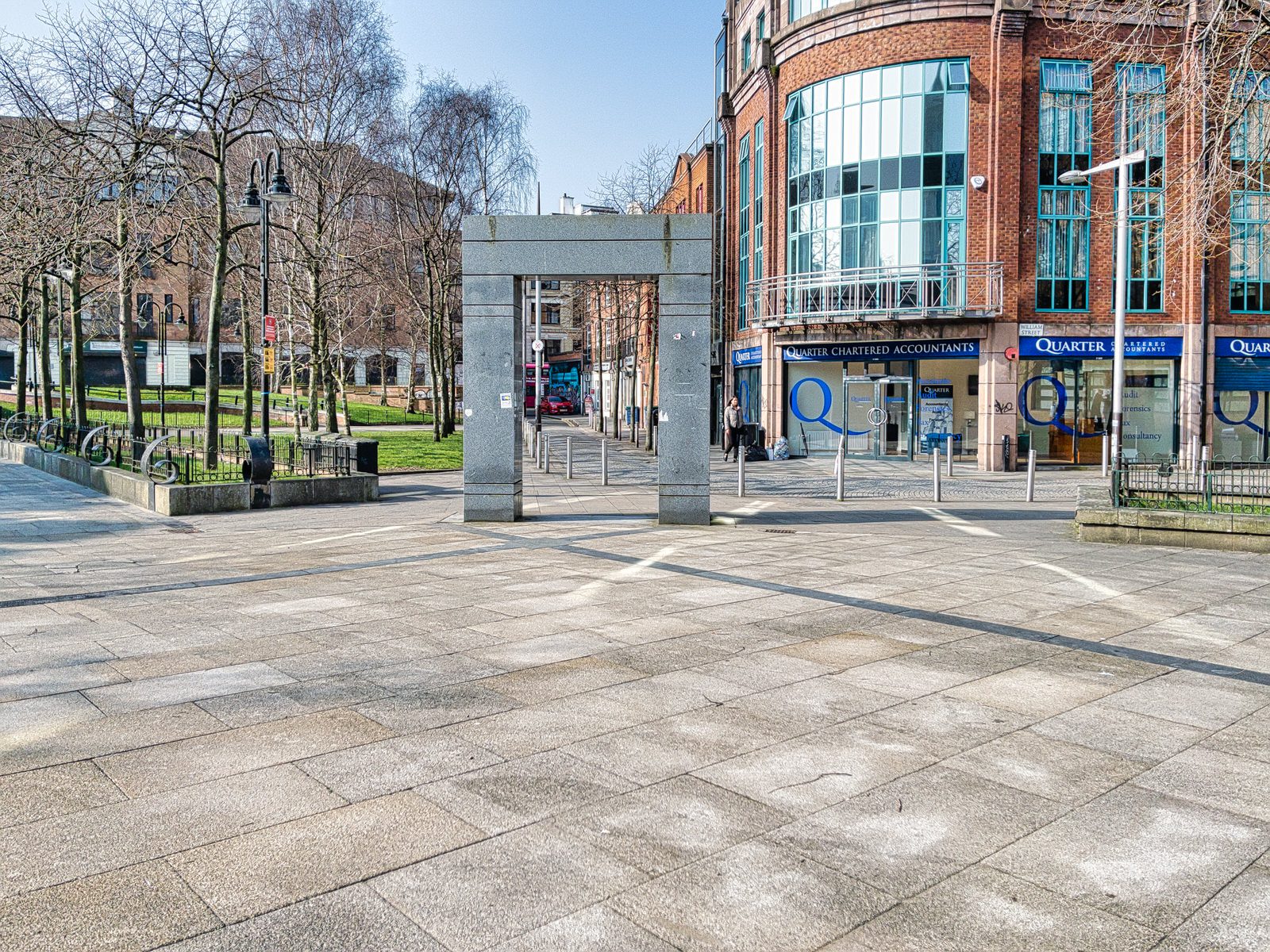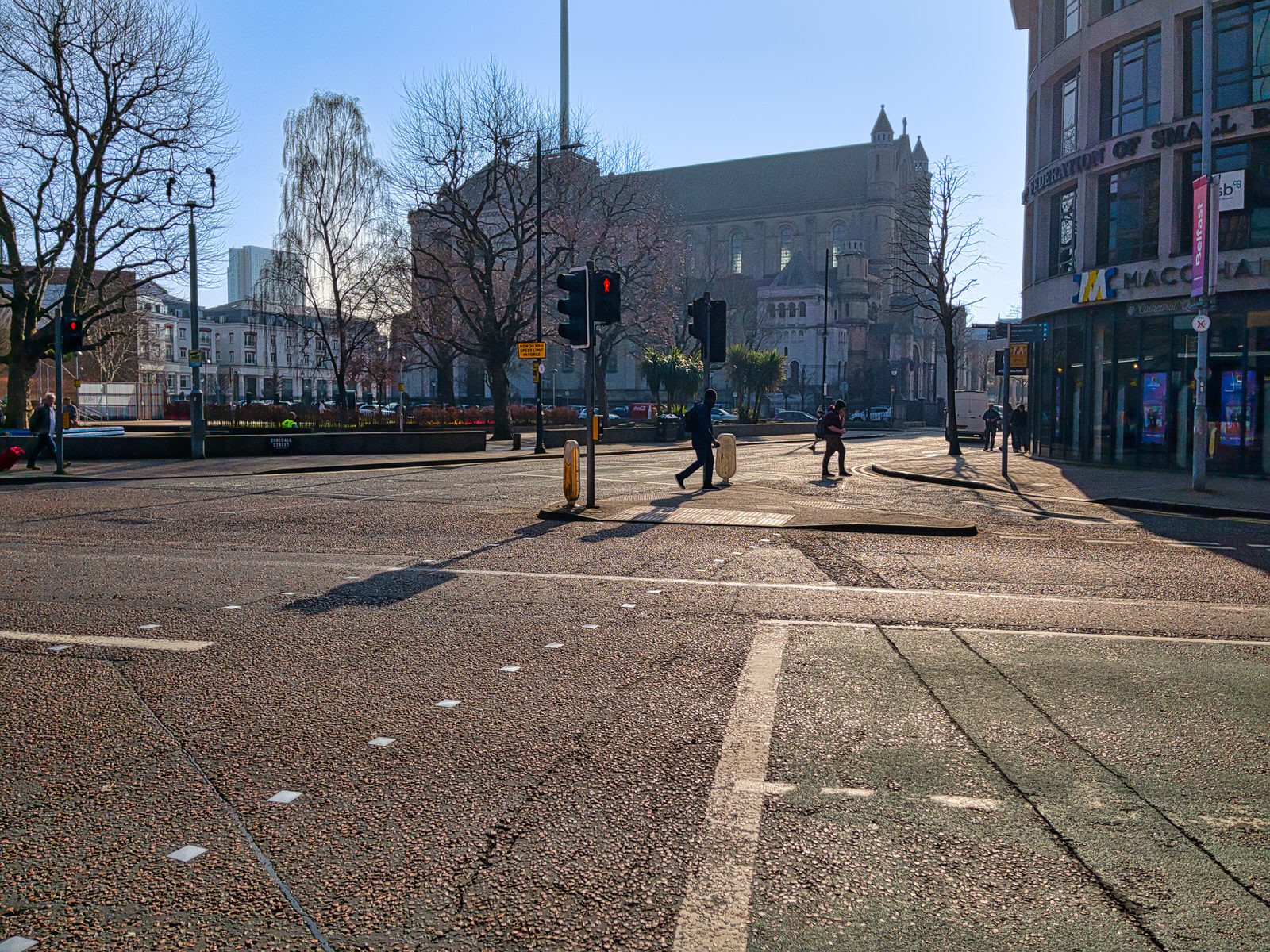CATHEDRAL QUARTER
Late last year some people expressed the opinion that Writers Square in Belfast needs to be protected as a publicly owned and accessible space especially as it is the larges public space in the Cathedral Quarter area of the city. There is currently a threat to the future use of Writers’ Square as a public space due to the plans of developers behind the Tribeca project.
The Tribeca Belfast development, formerly known as North East Quarter and previously Royal Exchange, is a planned £500 million development based in the north east of Belfast City Centre. It is a major mixed-use regeneration scheme, with a total area of 1.5 million sq ft (0.14 million m2) as of 2018. The development has generated controversy since its inception in 2003. Over the years, opposition has been levelled against its lack of care towards existing important built heritage, lack of integration with local small businesses and arts organisations and even its brand name, and much of its existence so far has been in the context of an arson attack on one of the existing buildings in 2004, while under the ownership of the developers.
St Anne’s Cathedral, also known as Belfast Cathedral, is a Church of Ireland cathedral in Donegall Street, Belfast, Northern Ireland.
The first architect was Sir Thomas Drew, the foundation stone being laid on 6 September 1899 by the Countess of Shaftesbury. The old parish church of St Anne by Francis Hiorne of 1776 had continued in use, up until 31 December 1903, while the new cathedral was constructed around it; the old church was then demolished. The Good Samaritan window, to be seen in the sanctuary, is the only feature of the old church to be retained in the cathedral. Initially, only the nave of the cathedral was built, and this was consecrated on 2 June 1904.
In 1924 it was decided to build the west front of the cathedral as a memorial to the Ulstermen and women who had served and died in the Great War. The foundation stone for this was laid by The 3rd Duke of Abercorn, Governor of Northern Ireland, on 2 June 1925 and the completed facade, to an amended design by the architect Sir Charles Archibald Nicholson, was dedicated in June 1927.
In the meantime, the central crossing, in which the choir sits, was built between 1922 and 1924. The Baptistery, to plans drawn up by the late W.H. Lynn, who had assisted Sir Thomas Drew, was dedicated in 1928, and the Chapel of the Holy Spirit, with its beautiful mosaics depicting Saint Patrick, was dedicated on 5 July 1932, the 1500th anniversary of the arrival of St Patrick in Ireland.
Edward, Lord Carson, the leader of the Unionist cause at the time of the Home Rule Crisis, was buried in the south aisle of the cathedral in 1935. In 1941 the cathedral was almost destroyed by a German bomb, which caused extensive damage to surrounding properties. In 1955 work began on the construction of the ambulatory, at the east end of the cathedral. This work was dedicated in 1959, but it was not for another ten years that it was possible to begin work on the north and south transepts. The Troubles and inflation led to long delays and major problems with the financing of this work.
The south transept, containing the Chapel of Unity, and with the organ loft above, was dedicated in 1974, and the north transept, with the large Celtic cross designed by John MacGeagh on the exterior, and housing the Chapel of the Royal Irish Rifles, was completed in 1981.
In April 2007 a 40-metre stainless steel spire was installed on top of the cathedral. Named the “Spire of Hope”, the structure is illuminated at night and is part of a wider redevelopment planned for the Cathedral Quarter. The base section of the spire protrudes through a glass platform in the cathedral’s roof directly above the choir stalls, allowing visitors to view it from the nave.
